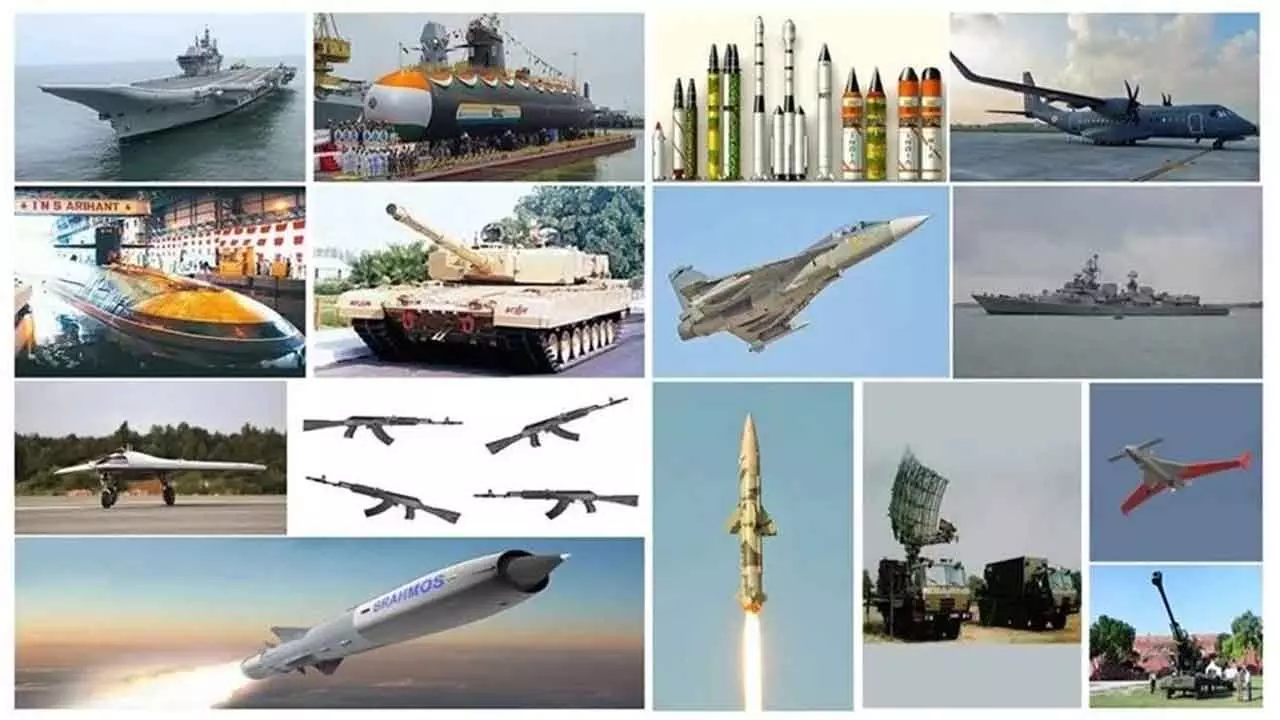Indian Defence Exports On A Roll As War Rages On And Offset Commitments Increase
Exports jumped by an astronomical 78 per cent in the first quarter of 2024-2025
Indian Defence Exports On A Roll As War Rages On And Offset Commitments Increase

In 2016, Boeing and Tata Group set up a joint venture-Tata Boeing Aerospace Ltd (TBAL)-in Hyderabad. This facility, spread over 14,000 square metres, manufactures aero-structures for Boeing’s AH-64 Apache helicopter, including fuselages, secondary structures and vertical spar boxes
In an interesting, but ironic, revelation the Stockholm International Peace Research Institute (SIPRI) has reported that India is not among the top 25 arms exporters. This is in spite of an increase in its defence exports, which in 2023-2024 hit a record high of Rs. 21,083 crore, implying that it is on a roll. The exports are related to defence hardware to the Middle East, Africa and South-East Asia.
The most recent data from the Ministry of Defence reveals that in 2023-2024, the country’s exports registered an envious 32.5 per cent increase over the previous fiscal year’s figure of Rs. 15,920 crore.
While the US has emerged as the biggest defence export destination, the Union Government is also focusing on countries in Africa and elsewhere to supply defence goods, with easier lines of credit and a diplomatic push.
The ministry’s data shows that exports jumped by an astronomical 78 per cent in the first quarter of 2024-2025, while the exports in April-June leapt to Rs. 6,915 crore from Rs. 3,885 crore in the year-ago period.
Here are some other details about India's defence exports and imports as outlined by SIPRI:
Arms imports: India is the world's largest arms importer. Between 2019 and 2023, the imports increased by 4.7 per cent compared to 2014–2018. Russia is the main supplier, accounting for 36 per cent of India's arms imports.
Arms exporters: The United States is the world's largest arms supplier and France is the second-largest.
Defence exports by state-owned and private sector companies include ammunition, small arms—including sniper rifles and specialised sight systems—bulletproof jackets and helmets, electronic items, armoured vehicles, lightweight torpedoes, simulators, drones and fast-attack vessels.
While Myanmar has traditionally been a big destination for Indian defence exports—mainly fuses and ammunition—countries like Israel and Armenia have also emerged as important buyers in recent years.
Israel imports certain sight systems, small arms manufactured by its subsidiary here along with certain fuses and ammunition besides drone structures and parts.
While India has signed some big-ticket standalone deals, like the BrahMos contract with the Philippines and one for artillery guns and air defence systems with Armenia, the biggest importer of Indian defence goods is the US, which accounts for nearly 50 per cent of India’s total defence exports.
Leading the pack of US companies is Boeing.
In 2016, Boeing and Tata Group set up a joint venture-Tata Boeing Aerospace Ltd (TBAL)-in Hyderabad.
This facility, spread over 14,000 square metres, manufactures aero-structures for Boeing’s AH-64 Apache helicopter, including fuselages, secondary structures and vertical spar boxes for customers worldwide. It can produce up to eight fuselages a month and has supplied over 200 Apache fuselages so far. It has also supplied over 1,500 secondary structures and vertical spar boxes for Apache, besides other items for the company’s 737 planes on the civilian side, according to the American Chamber of Commerce.
Besides the Tatas, another leading company in the business is Bengaluru-based Dynamatic Technologies, which has been manufacturing the ramp and complex aft pylon for Chinook heavy-lift helicopters, as well as power and mission cabinets for the P-8 Poseidon maritime reconnaissance aircraft.Also based in Bengaluru, Rossell Techsys manufactures wire harnesses and electrical panels for the AH-64 Apache, and the harness for several Boeing Defence, Space & Security (BDS) platforms including fighter aircraft such as the V-22 Osprey, CH-47 Chinook, F-15 and F/A-18 Super Hornet.
Besides these companies, Bengaluru-based SASMOS HET Technologies manufactures electrical panel assemblies for the F/A-18 Super Hornet and F-15 Strike Eagle. State-run Hindustan Aeronautics Limited (HAL) manufactures F/A-18 gun bay doors, while Bharat Electronics Limited (BEL) manufactures IFF (Identify Friend/Foe) combat identification systems and speech secrecy systems for the P-8I.
Sources said that while most of their initiatives are part of the offset commitments, it also makes business sense now to widen the basket of the supply chain.
The other big US defence company driving India’s export market is Lockheed Martin through its two joint ventures with the Tatas in Hyderabad.
Established in 2010 between Tata Advanced Systems Limited (TASL) and Lockheed Martin Aeronautics, one joint venture has manufactured over 200 empennages for its C-130J transport aircraft as part of its global supply chain. The joint venture is now the single source supplier for global C-130 empennages.
The other joint venture is the world’s sole producer of S-92 helicopter cabin components, which has so far delivered over 157 S-92 cabins.
Significantly, fighter wings are now produced in India, from where the US also imports several other tools and sight systems.

